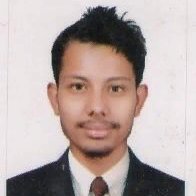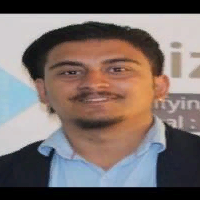International Journal of Education and Management Engineering (IJEME)
IJEME Vol. 10, No. 3, 8 Jun. 2020
Cover page and Table of Contents: PDF (size: 262KB)
A steady-state analysis of a hair salon as a single-queue, multi-server system to optimize the waiting time in a queue
Full Text (PDF, 262KB), PP.22-32
Views: 0 Downloads: 0
Author(s)
Index Terms
Probability Distribution, Waiting Line Model, Single Server Configuration, Kendall Notation
Abstract
The waiting lines and service systems are crucial parts of our daily life. Services like hospitals and clinics, banks, salons, restaurants, et cetera have a high influx of people during the working hours. Every system likes to avoid losing their desired customers due to a long wait in the queue. Increasing the number of servers obviously reduces waiting time, but is not the best solution since it adds expenses because the employees should be paid. On the other hand, not concerning about waiting time will result in customer dissatisfaction and ultimately the loss of valued customers. This article presents the analytical study of the overall time that a customer needs to spend on a hair salon for the current number of hairdressers as well as the impact of adding servers (hairdressers) on waiting time. It models the queuing system of the hair salon to optimize the waiting time for a customer who arrives at the salon. Further, it provides a basis to make a wise decision on adding servers. The system is modelled as a steady-state single queue, multi-server configuration system.
Cite This Paper
Sambhav Kharel, Roshan Bhandari, Satish K C, Aayush Bhattrai. " A Steady-State Analysis of a Hair Salon as a Single-Queue, Multi-Server System to Optimize the Waiting Time in a Queue ", International Journal of Education and Management Engineering(IJEME), Vol.10, No.3, pp.22-32, 2020. DOI: 10.5815/ijeme.2020.03.03
Reference
[1] P. Chen, Y. Lu, V. W. Zheng, X. Chen, and B. Yang, “KnowEdu : A System to Construct Knowledge Graph for Education,” IEEE, vol. 6, pp. 31553–31563, 2018. [1] Ragsdale, C T.. Spreadsheet modeling & decision analysis: custom publication. Scarborough, Ont.: Thomson Nelson, 2008.
[2] Bose, S K.. An introduction to queuing systems. New York: Kluwer Academic/Plenum Publishers, 2002.
[3] Holt Jr, Charles A., and Roger Sherman. "Waiting-line auctions." Journal of Political Economy 90.2 (1982): 280-294.
[4] Artalejo, Jesus R. "A queueing system with returning customers and waiting line." Operations Research Letters 17.4 (1995): 191-199.
[5] Cernea, Sidonia Otilia, Mihaela Jaradat, and Mohammad Jaradat. "Characteristics of waiting line models-the indicators of the customer flow management systems efficiency." Annales Universitatis Apulensis: Series Oeconomica 12.2 (2010): 616.
[6] Friedman, Hershey H., and Linda Weiser Friedman. "Reducing the wait in waiting-line systems: waiting line segmentation." Business horizons 40 (1997): 54-58.
[7] Chowdhury, Mohammad Shyfur Rahman. "Queuing theory model used to solve the waiting line of a bank: a study on Islami Bank Bangladesh Limited, Chawkbazar Branch, Chittagong." Asian Journal of Social Sciences & Humanities 2.3 (2013): 468-478.
[8] Levhari, David, and Israel Luski. "Duopoly pricing and waiting lines." European Economic Review 11.1 (1978): 17-35.
[9] Meisling, Torben. "Discrete-time queuing theory." Operations Research 6.1 (1958): 96-105.
[10] De Bruin, Arnoud M., et al. "Modeling the emergency cardiac in-patient flow: an application of queuing theory." Health Care Management Science 10.2 (2007): 125-137.
[11] Kalashnikov, Vladimir V. Mathematical methods in queuing theory. Vol. 271. Springer Science & Business Media, 2013.
[12] Dressin, S. A., and Edgar Reich. "Priority assignment on a waiting line." Quarterly of applied mathematics 15.2 (1957): 208-211.
[13] Rao, S. Subba. "The relationship of work-in-process inventories, manufacturing lead times and waiting line analysis." International Journal of Production Economics 26.1-3 (1992): 221-227.
[14] Kim, Bong-Sub, and Jae-Nam Lee. "A Study on The Characteristics of Aesthetic Salon Operation and Job Satisfaction by Important Aspects in Launching Aesthetic Salon Business." Journal of the Korea Academia-Industrial cooperation Society 19.2 (2018): 318-328.
[15] Koh, Teow Hock, Zhenlin Yang, and Lijing Zhu. The general dominance of lottery over waiting-line. School of Economics and Social Sciences, Singapore Management University, 2002.
[16] Luckhardt, Wesley E. "A Waiting Line Model: Determining the Number of Seats Needed in Dining Areas." Journal of College & University Foodservice 1.1 (1992): 25-37.



